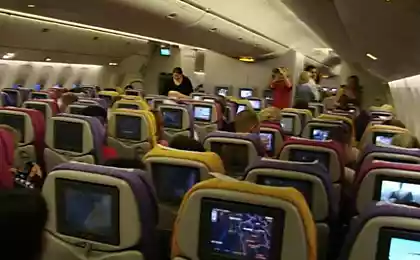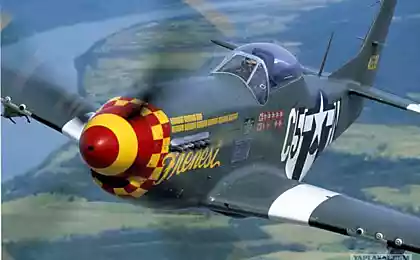1355
Unmanned Aerial Vehicles
It is interesting to learn how to change unmanned aerial vehicles (UAVs) from 1917 to the present day.
Read the description of the photos.

1. "flying torpedo" Sperry, 1917. In just ten years before the Wright brothers' plane first flew over the dunes of Kitty Hawk, California. At the end of the First World aviation was still in its infancy, and it was a time of tremendous innovation. In 1917, Peter Cooper and Elmer Sperry created the first automatic gyroscopic stabilizer, which leveled the aircraft in flight, and it made possible the construction of an unmanned aircraft. With the use of new technology Curtiss N-9 altered in the drone, controlled by radio. He flew 50 miles of test flights with a 300-pound bomb, but never used in combat. (San Diego Air & Space Museum Archives / Flickr)

2. "flying torpedo" Kettering, 1917. The aircraft, called "Beetle Kettering» (Kettering Bug) cost $ 400 and could carry 300 pounds of payload. Engineer "General Motors" gave Charles Kettering "Bug", starts with a trolley, removable wings. US forces at the end of the First World made a large order for such aircraft, but the war ended and they had not yet applied. (OZinOH / Flickr)
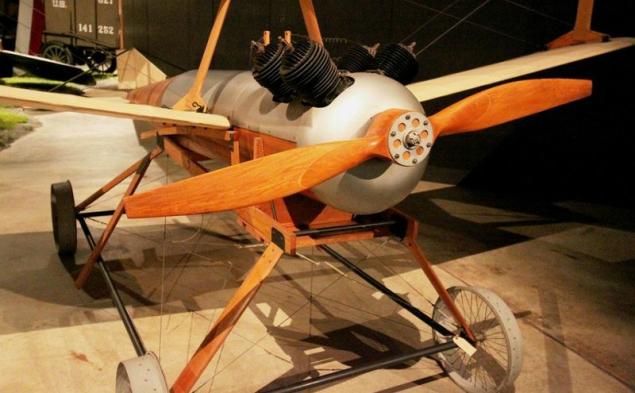
3. DH.82B «Queen Bee», 1935. Until 1935, the UAVs are not able to return to the launch site, so it was impossible to re-use. Create UAV & quot; Queen Bee & quot; It became a new page in the unmanned aircraft. Apparatus with a ceiling of 5 km and a maximum speed of 170 km / h could go back to the start, and was used by the Royal Navy and the Air Force until 1947. (San Diego Air & Space Museum Archives / Flickr)
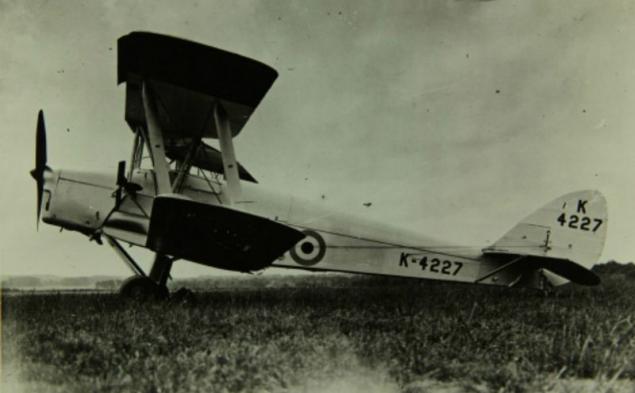
4. "V-1" weapon of retaliation, 1944. Adolf Hitler wanted to get a flying bomb that could be used against civilian targets, and in 1944, Wernher von Braun created the ancestor of today's cruise missiles. Maximum speed of the aircraft projectile was 656 km / h. Curb weight "V-1" is 2150 kg and the range - 240 km at a practical ceiling of 3050 meters. From explosions "V-1" in England, killing more than 900 civilians. (San Diego Air & Space Museum Archives / Flickr)

5. Ryan Firebee, 1955. The first prototype of the UAV «Firebee» XQ-2 was built in 1951 and first flew in 1955. It was one of the first unmanned jet, and the US Air Force used for intelligence gathering and surveillance of radio communications. (San Diego Air & Space Museum Archives / Flickr)

6. Lockheed Martin M-21 and D-21, 1963. Starting the D-21 drone was carried aboard a scout M-21 "Blackbird". This program has been a secret for over 40 years. M-21 has been equipped with an additional cabin for the operator of the UAV. Aircraft were used from 1969 to 1971 to oversee the nuclear test site Lop Nur. The program shut down after a collision with a drone aircraft carrier. (James_gordon_los_angeles' / Flickr)

7. «Pioneer» RQ-2A, 1986. For the first time the UAV flew in December 1986. It was created to provide unit commanders with a picture of the battlefield in real time. It was used during operations in Grenada, Lebanon and Libya, and is still used today. Take-off is done with the starting rocket booster. UAVs can fly at a speed of over 185 km / h with a mass of 188 kg. It does not sink and can be picked up from the water surface. (Cliff1066 / Flickr)

8. MQ & quot; Predator & quot ;, 1994. "General Atomics" created "Predator» MQ in 1994, and this updated version of the UAV got a chance to carry the weapons and destroy targets. The US Air Force consists of 125 drone of the type and 6 - Air Force Italy. "Predator" applied in Bosnia, Iraq and Afghanistan, but now gradually removed from service. (General Atomics / Getty Images)

9. RQ-7B «Shadow» 200 2004. This UAV - one of the smallest unmanned reconnaissance used by the Army and the US Marine Corps in Iraq and Afghanistan. Scout is able to detect targets at a distance of 125 km from the launch pad, allowing you to command the brigade to respond quickly to the changing situation on the battlefield. UAVs of this type by May 2010 had to bump in the Middle East more than 500,000 hours. (James_gordon_los_angeles' / Flickr)
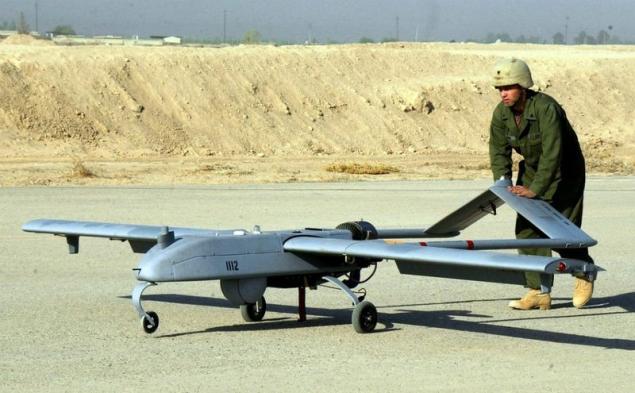
10. Fire Scout, 2005. The unmanned helicopter that can take off and land on board the warship and use unprepared landing sites, was created for the US military in the early 2000s. This photo shows the launch of 69-mm unguided missiles on board the UAV at Yuma Proving Ground in Arizona. (US Navy / digital version by Science Faction)
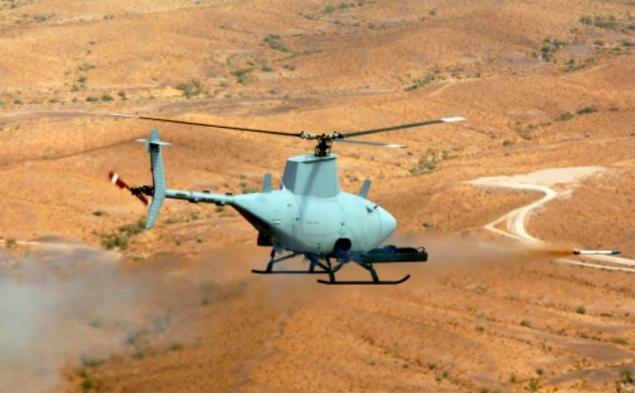
11. RQ-170 Sentinel, 2009. Designed and built by «Skunk Works» RQ-170 used by the US Air Force. He was nicknamed "Kandahar beast", and was first used during the operation "Enduring Freedom" in Afghanistan. In May 2011, it was used in the raid on Abootabad, Pakistan, where he was found and killed Osama bin Laden. In December, one of the UAV was captured by Iran and was shown on Iranian television. The ceiling for the RQ-170 is 15,240 m. (James_gordon_los_angeles' / Flickr)

12. & quot; Global Hawk & quot ;, 2010. "Global Hawk" - high-altitude reconnaissance UAV long-range. This was the first UAV has flown the Pacific Ocean. In the photo: a full-size mock-up "Global Hawk" in the exhibition in Tokyo. (Koichi Kamoshida / Getty Images)

Source: bigpicture.ru
Read the description of the photos.

1. "flying torpedo" Sperry, 1917. In just ten years before the Wright brothers' plane first flew over the dunes of Kitty Hawk, California. At the end of the First World aviation was still in its infancy, and it was a time of tremendous innovation. In 1917, Peter Cooper and Elmer Sperry created the first automatic gyroscopic stabilizer, which leveled the aircraft in flight, and it made possible the construction of an unmanned aircraft. With the use of new technology Curtiss N-9 altered in the drone, controlled by radio. He flew 50 miles of test flights with a 300-pound bomb, but never used in combat. (San Diego Air & Space Museum Archives / Flickr)

2. "flying torpedo" Kettering, 1917. The aircraft, called "Beetle Kettering» (Kettering Bug) cost $ 400 and could carry 300 pounds of payload. Engineer "General Motors" gave Charles Kettering "Bug", starts with a trolley, removable wings. US forces at the end of the First World made a large order for such aircraft, but the war ended and they had not yet applied. (OZinOH / Flickr)

3. DH.82B «Queen Bee», 1935. Until 1935, the UAVs are not able to return to the launch site, so it was impossible to re-use. Create UAV & quot; Queen Bee & quot; It became a new page in the unmanned aircraft. Apparatus with a ceiling of 5 km and a maximum speed of 170 km / h could go back to the start, and was used by the Royal Navy and the Air Force until 1947. (San Diego Air & Space Museum Archives / Flickr)

4. "V-1" weapon of retaliation, 1944. Adolf Hitler wanted to get a flying bomb that could be used against civilian targets, and in 1944, Wernher von Braun created the ancestor of today's cruise missiles. Maximum speed of the aircraft projectile was 656 km / h. Curb weight "V-1" is 2150 kg and the range - 240 km at a practical ceiling of 3050 meters. From explosions "V-1" in England, killing more than 900 civilians. (San Diego Air & Space Museum Archives / Flickr)

5. Ryan Firebee, 1955. The first prototype of the UAV «Firebee» XQ-2 was built in 1951 and first flew in 1955. It was one of the first unmanned jet, and the US Air Force used for intelligence gathering and surveillance of radio communications. (San Diego Air & Space Museum Archives / Flickr)

6. Lockheed Martin M-21 and D-21, 1963. Starting the D-21 drone was carried aboard a scout M-21 "Blackbird". This program has been a secret for over 40 years. M-21 has been equipped with an additional cabin for the operator of the UAV. Aircraft were used from 1969 to 1971 to oversee the nuclear test site Lop Nur. The program shut down after a collision with a drone aircraft carrier. (James_gordon_los_angeles' / Flickr)

7. «Pioneer» RQ-2A, 1986. For the first time the UAV flew in December 1986. It was created to provide unit commanders with a picture of the battlefield in real time. It was used during operations in Grenada, Lebanon and Libya, and is still used today. Take-off is done with the starting rocket booster. UAVs can fly at a speed of over 185 km / h with a mass of 188 kg. It does not sink and can be picked up from the water surface. (Cliff1066 / Flickr)

8. MQ & quot; Predator & quot ;, 1994. "General Atomics" created "Predator» MQ in 1994, and this updated version of the UAV got a chance to carry the weapons and destroy targets. The US Air Force consists of 125 drone of the type and 6 - Air Force Italy. "Predator" applied in Bosnia, Iraq and Afghanistan, but now gradually removed from service. (General Atomics / Getty Images)

9. RQ-7B «Shadow» 200 2004. This UAV - one of the smallest unmanned reconnaissance used by the Army and the US Marine Corps in Iraq and Afghanistan. Scout is able to detect targets at a distance of 125 km from the launch pad, allowing you to command the brigade to respond quickly to the changing situation on the battlefield. UAVs of this type by May 2010 had to bump in the Middle East more than 500,000 hours. (James_gordon_los_angeles' / Flickr)

10. Fire Scout, 2005. The unmanned helicopter that can take off and land on board the warship and use unprepared landing sites, was created for the US military in the early 2000s. This photo shows the launch of 69-mm unguided missiles on board the UAV at Yuma Proving Ground in Arizona. (US Navy / digital version by Science Faction)

11. RQ-170 Sentinel, 2009. Designed and built by «Skunk Works» RQ-170 used by the US Air Force. He was nicknamed "Kandahar beast", and was first used during the operation "Enduring Freedom" in Afghanistan. In May 2011, it was used in the raid on Abootabad, Pakistan, where he was found and killed Osama bin Laden. In December, one of the UAV was captured by Iran and was shown on Iranian television. The ceiling for the RQ-170 is 15,240 m. (James_gordon_los_angeles' / Flickr)

12. & quot; Global Hawk & quot ;, 2010. "Global Hawk" - high-altitude reconnaissance UAV long-range. This was the first UAV has flown the Pacific Ocean. In the photo: a full-size mock-up "Global Hawk" in the exhibition in Tokyo. (Koichi Kamoshida / Getty Images)

Source: bigpicture.ru




